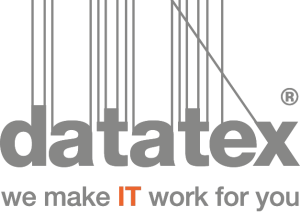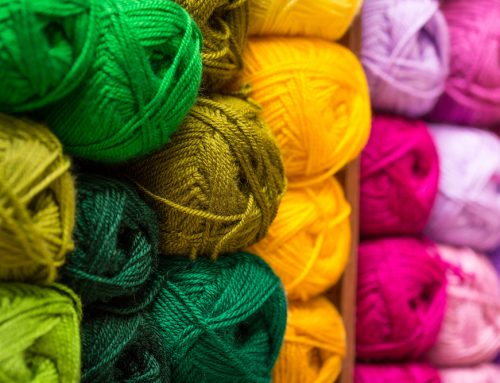Čateks – Important Croatian textile company. Čateks was founded in 1874 and has its headquarters in the city of Cakovec. Today, it specializes in the production of technical and special fabrics for the military and medical-health sectors.
This year Čateks celebrates 145 years of successful business. What were the biggest turning points and challenges during all those years?
Well obviously there were a lot of turning points, but from my own perspetive one of them was the relocation of our company in 1961. From the centre of the city to the industrial outskirts where we are located today. This was the beginning of the modern era of our company and the starting point for building up the whole production complex we run today. After the first grand opening of the new textile production in 1961. We have estblished a first PU coating production in 1970s, and the confection production in 1980s. Lately, we had two big impacts on our production, one was the entering of China in WTO in 2005.
Which had a huge negative impact on our company`s business because of the unloyal price comeptition, and the second was the world financal crisis in 2008. Which inflicted a downfall of all business activities for more then 35%. Those two big impacts tought us that we have to change our mindsets and future business perspective if we want to survive, and that was the time when we started to make a shift in our production from big/large scale commodity production to small scale production for special purposes and based on order .
Obviously, with such heritage, would you say this puts higher expectations and responsibilities upon You and Your team?
When You look at it localy : « Yes, because almost everybody had somebody who was in one way or another involved in our compay during its history ». When You look at it globaly it only gives You an advantage because when You first present Your company to a new partner he allready knows You are serious when You mention to him how old the company is. This is heritage and we respect it everyday in our work.
How do you feel the business has evolved from those early days, in particular the needs and expectations of the clients?
In the past when we were stil in former country Yugoslavia. It was easier regarding the business because there was never a problem with lacking orders or negotiating a price, it was merely a problem of doing it on time. Then, we were more an exporter doing business with EU countries and USA as well. Today we have to fight for every client, using all the advantages we have, like best quality and service, but with price competitive products. I would say that it is much more difficult today. Since the market is constantly changing and the demands are much more differentiating and growing then before. You just have to be more flexible if You want to survive on the market today.
Compago brands are now already a recognizable names on regional and international markets. When did you decide to make such division and which Compago brand had the most success?
It was before the crisis in 2008. and after 2005. when we decided to promote our products differently not just by the name of our company but we want to give them a specific brand name. For the textile products which are not an end user products, but a semi products it was not an easy task, because we were not promoting it to the final customers but to the business clients which used our products to produce the final products. Normaly Compago Defend is the leading brand, but Compago Medical is also doing quite well.
They say that on the ,,long run’’ only quality will secure the client fidelity. What kind of material testing and quality control do you have today?
Since we mainly produce products for the special purposes, they all have to be tested and certified for numerous technical characteristics. A lot of it is done in house in our own laboratory, but all our products have special certificates which indicate the quality and other aplicable insurances for all our customers. Beside the products quality control we have implemented also a Management system quality control: ISO 9001:2015, and are in the process of implementing the NATO AQAP 2110 certificate.
What are the key markets for your products and do you think that trends are differing significantly from one region to another?
At the moment we export over 75% of our products world wide but mainly to the EU countries. Germany is our leading country of export, followed by Spain, England, Lithuania and Netherlands. Normaly there a differences between production programs we sell around EU. In the „western countries“ we mainly sell medical and home textile, and in the eastern countries we do more business with our military program.
We are witnessing the textile market going through many changes in previous years partly due to adapting to the crisis effects. Would you now declare that the crisis in our industry is officially behind us?
Unfortunately no. The are 2 aspects to differ when speaking of textile industry. Capital intensive vs labour intensive production. The first one (capital intensive) is growing rapidly since it doesnt depend on the workforce, but merely on the knowledge and investmenst. Production of fibers, yarns, fabrics and other „technical“ textiles is the future of our industry. On the other hand, confection will face a lot of problems in the future because of the lack of work force. EU countries are getting older each Year, and all labour intensive industries are allready having a difficulties in finding a personell for the production. It is not just the cost issue (the differences in wages between west & east), it is now the problem with finding enaugh people to work in the industry.
Other main factor that is slowly changing the textile industry is the environment awareness and the impact on nature. Also, being ,,green’’ is a strong s ales point these days. What is your view on this?
EU comission has put a lot of effort on ecological aspects of production in EU. We have also adapted our production accordingly. But we have issue where customers don`t want to pay higher prices for the „green“ products meaning that everybody else outside EU can produce without strict ecological rules and awareness and sell it cheaper on the EU market. I think that this has to be changed because companies by itself won`t change the consciosness on the market which is only driven by profits. Exception are big brands who can withstand this but in general we all have put a lot of effort for the future generations.
E-commerce is emphasized on your website. Would you say this is an important, growing channel of distribution for Čateks?
Yes, but we are not happy with new emerging regulations which are not going into right direction. People don’t understand that it is not an easy task to establish a web-shop and follow all the rules, and this is really hard for small scale businesses which don’t have the necessary capital to work in this way. I think the regulators should loosen up a bit this type of distribution. So, it would be a great platform for small scale business specialy in textile sector. For us web-shop is also a great promoting and testing tool.
Finally, there are many challenges… competitiveness and adapting are imperative, Industry 4.0 is the next big thing. What are the strategic steps for Čateks in the years to come?
We have a few big projects on going: modernization of our textile production plant and energy efficency projects. Along the way we want to initate the implementation of the new ERP system, normally provided by Datatex for which we think is the best solution for our company. We want to be ready for the next decade, and we want to prepare our people as well for the future. It would be interesting to see where we will be in the next 10 Years. For sure our Compago fabrics will be traveling around EU


